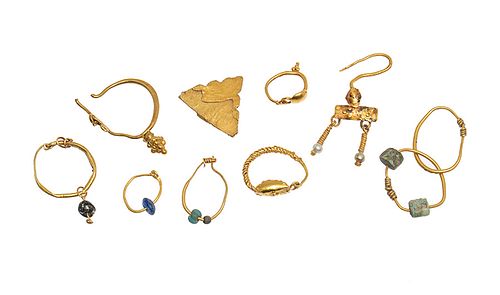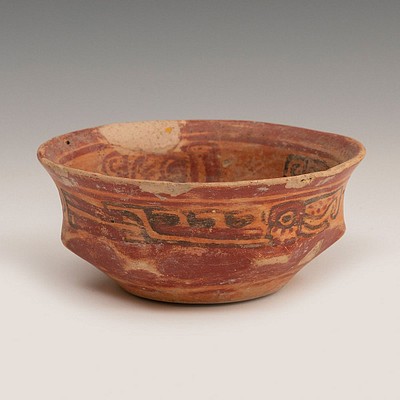Selection of nine pieces of jewelry. Rome, II-III centuries A.D. In gold and hard stones.
Lot 26
About Seller
Setdart Auction House
Carrer Aragó 346
Barcelona
Spain
Setdart Subastas was born in 2004 and is currently the first online art auction in Spain with solidity, prestige and reliability guaranteed by our more than 60,000 users. Setdart has a young, dynamic and enterprising team ready to successfully manage the purchase and sale of art works through custom...Read more
Categories
Estimate:
EUR€450 - EUR€500
$483.87 - $537.63
Absentee vs Live bid
Two ways to bid:
- Leave a max absentee bid and the platform will bid on your behalf up to your maximum bid during the live auction.
- Bid live during the auction and your bids will be submitted real-time to the auctioneer.
Bid Increments
| Price | Bid Increment |
|---|---|
| EUR€0 | EUR€10 |
| EUR€200 | EUR€25 |
| EUR€500 | EUR€50 |
| EUR€1,000 | EUR€100 |
| EUR€3,000 | EUR€200 |
| EUR€5,000 | EUR€500 |
| EUR€10,000 | EUR€1,000 |
| EUR€20,000 | EUR€2,000 |
| EUR€50,000 | EUR€5,000 |
About Auction
By Setdart Auction House
Dec 23, 2021
Set Reminder
2021-12-23 04:30:00
2021-12-23 04:30:00
America/New_York
Bidsquare
Bidsquare : Archaeology, Session II
https://www.bidsquare.com/auctions/setdart-auction-house/archaeology-session-ii-8051
Setdart Auction House sofia@setdart.com
Setdart Auction House sofia@setdart.com
- Lot Description
Selection of nine pieces of jewelry. Rome, II-III centuries A.D. In gold and hard stones. Measurements: between 10 x 8 mm (the smallest) and 14 x 16 mm (the largest). Selection of nine pieces of jewelry entirely made of gold. They are decorated with hard stones, filigree and granulated, common techniques in Roman jewelry. Although this selection of jewelry has been made in the Roman period, stylistically they are rooted in Greek jewelry, an important artistic trend that included a large variety of objects within the Greek territory. Greek artisans worked from necklaces, crowns, to rings, diadems, bracelets and, of course, earrings. The stylistic differentiation between these objects allows them to be catalogued according to a period (Bronze Age, Mycenaean Civilization, Minoan Civilization, Dark Ages, Archaic Period, Classical Greece, Hellenistic Period, Roman Greece) or place of origin. The most used material was gold, worked following different techniques (filigree, casting, granulated, chiseled) and the combination of stones such as emerald, garnet, glass or even pearls. Within its ornamentation, the representation of figurative elements related to the plant and floral world, as well as animal and Greek mythological deities stands out.
- Shipping Info
-
In-house shipping available. Please inquire at admin@setdart.com.
-
- Buyer's Premium



 EUR
EUR CAD
CAD AUD
AUD GBP
GBP MXN
MXN HKD
HKD CNY
CNY MYR
MYR SEK
SEK SGD
SGD CHF
CHF THB
THB












